Are Human Beings The Only Technologically Advanced Civilization In The Universe?
Reality won't not be 'out there' by any means.
There may never have been another clever, innovatively propelled outsider species in the whole history of the Universe. When you consider that there might be 400 billion stars in the Milky Way, up to three conceivably livable universes in a large number of these star frameworks, and around two trillion systems in the whole Universe, it appears like keen life is a certainty. Be that as it may, our instinct can regularly lead us adrift; what we feel is not a viable alternative for science. The extent of the questions that abiogenesis, development, long haul tenability and different elements bring into the condition tosses huge numbers of our suppositions about existence into question. It's valid that there are a galactic number of conceivable outcomes for keen, mechanically progressed lifeforms, yet the tremendous vulnerabilities make it an undeniable probability that people are the main spacefaring outsiders our Universe has ever known.
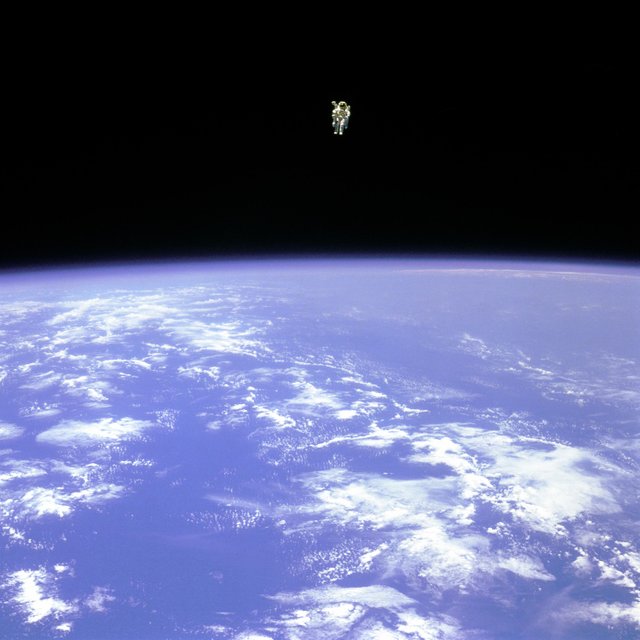
The longest untethered spacewalk ever, by NASA space explorer Bruce McCandless, on board STS-41-B. Picture credit: NASA.
In 1961, researcher Frank Drake thought of the principal condition to foresee what number of spacefaring civic establishments there were in the Universe today. He depended on a progression of obscure amounts that he could make gauges for, and at last touch base at what number of mechanically propelled outsider species there were, at exhibit, in both our cosmic system and our noticeable Universe at this moment. With the advances of the most recent 55 years, a considerable lot of those amounts we once could just gauge by means of mystery are presently known to an amazing level of accuracy.
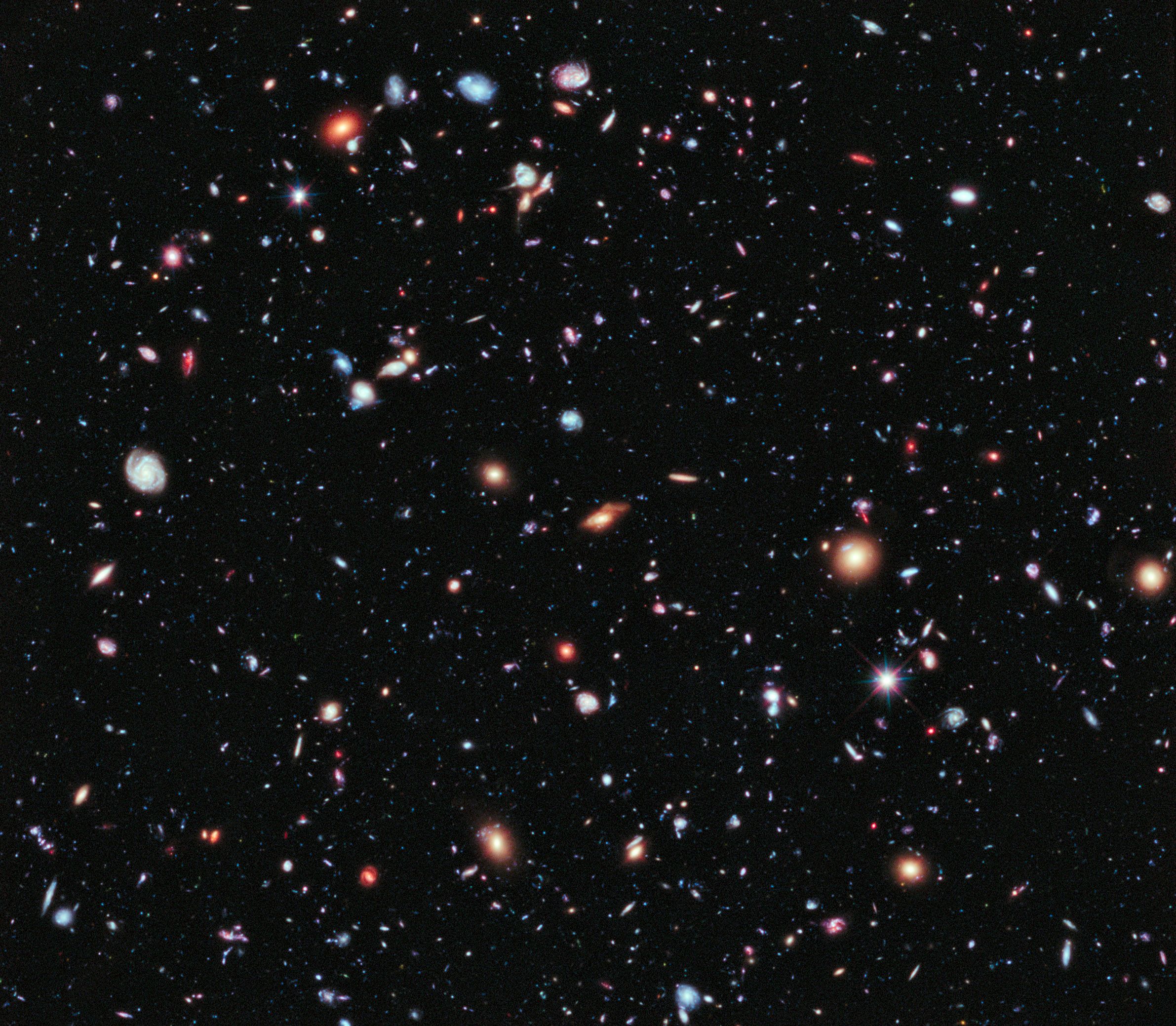
Picture credit: NASA; ESA; G. Illingworth, D. Magee, and P. Oesch, University of California, Santa Cruz; R. Bouwens, Leiden University; and the HUDF09 Team.
First off, our comprehension of the size and size of the Universe has expanded significantly. We now know, on account of perceptions made with space-based and ground-based observatories covering the full range of the electromagnetic wavelengths, how enormous the Universe is and what number of cosmic systems there are inside it. We have a vastly improved comprehension of star arrangement and how stars function, thus when we watch out into the terrific chasm of profound space, we can ascertain what number of stars there are out there in the Universe, both now and over the whole grandiose history since the Big Bang. That number is huge — somewhere near 10²⁴ — and it speaks to the quantity of chances the Universe has had, in the course of the last 13.8 billion years, to deliver life like our own.
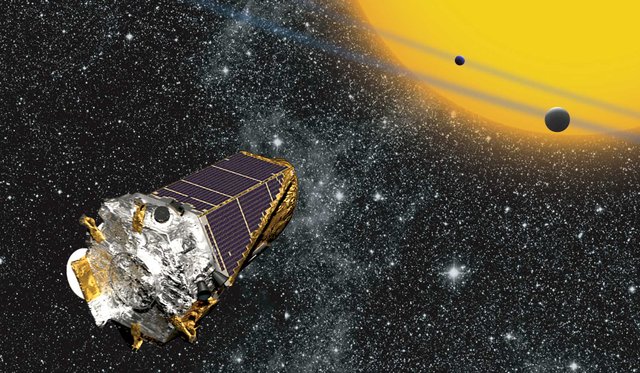
Outline of the planet-discovering space telescope, Kepler, from NASA. Picture credit: NASA Ames/W. Stenzel.
We used to consider what number of those stars had planets around them, what number of those planets were rough and equipped for having climates like our own, and what number of them were the correct separations from their stars to have fluid water on their surfaces. For countless ages, this was something we just pondered about. Be that as it may, on account of gigantic advances in exoplanet ponders, most fantastically with the coming of NASA's Kepler shuttle, we've adapted such a great amount about what's out there, including that:
somewhere close to 80– 100% of stars have planets or planetary framework circling them,
roughly 20– 25% of those frameworks have a planet in their star's "tenable zone," or the correct area for fluid water to shape on their surface,
what's more, roughly 10– 20% of those planets are Earth-like in size and mass.
So including that all up, there are more than 10²² conceivably Earth-like planets out there in the Universe, with the correct conditions for life on them.
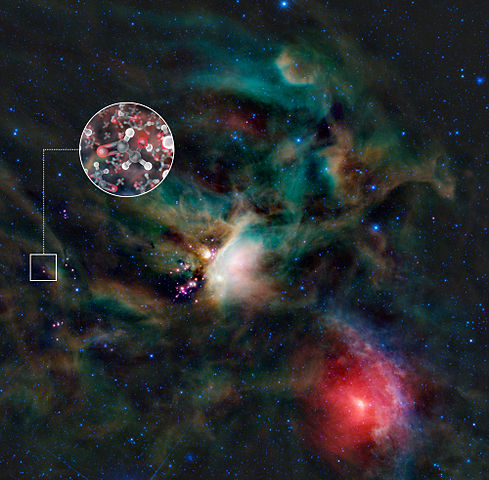
Sugar particles in the gas encompassing a youthful, Sun-like star. Picture credit: commons.wikimedia.org (ESO/NAOJ/NRAO)/L. Calçada (ESO) and NASA/JPL-Caltech/WISE Team.
The circumstance is surprisingly better than that, on the grounds that aside from the main ages of the principal stars, for all intents and purposes every one of them come enhanced with the overwhelming components and fixings essential forever. When we take a gander at the interstellar medium, at atomic gas mists, at the focuses of far off worlds, at outpourings from monstrous stars or even at our own particular cosmic system, we discover the components of the intermittent table — carbon, nitrogen, oxygen, silicon, sulfur, phosphorous, copper, press and more — necessary for life as we probably am aware it. When we peer inside meteors and space rocks in our own particular Solar System, we find these components, as well as we discover them designed into natural particles like sugars, carbon rings and even amino acids. At the end of the day, there are not just more than 10²² conceivably Earth-like planets out there in the Universe; there are more than 10²² possibly Earth-like planets with the correct crude elements forever!

There should be loads of world that started with Earth-like conditions, and we're near measuring various universes like that, in our own particular cosmic system and in the Universe, to a dependable exactness. Picture credit: Wikimedia Commons client Lucianomendez.
In any case, that is the place our confidence, in case we're by and large logically legit and circumspect, should end. Since there are three major strides out there, so as to get a human-like progress, that need to happen:
The progression of abiogenesis — where the crude fixings related with natural procedures really move toward becoming what we perceive as "life" — needs to happen.
Life must survive and flourish for billions of years on a planet with a specific end goal to develop multicellularity, multifaceted nature, separation, and, at long last, what we call "knowledge."
Lastly, that clever life should then turn into a mechanical progress, either picking up the capacity to report its quality to the Universe, to connect past its home and investigate the Universe, or to achieve the phase where it can tune in for different types of knowledge in the Universe. (Or then again, more hopefully, every one of the three.)
At the point when Carl Sagan initially displayed Cosmos in 1980, he guaranteed it was sensible to give every one of these three stages a 10% shot of succeeding. In the event that that were right, there would be more than 10 million clever, outsider developments that have existed in the Milky Way universe alone!
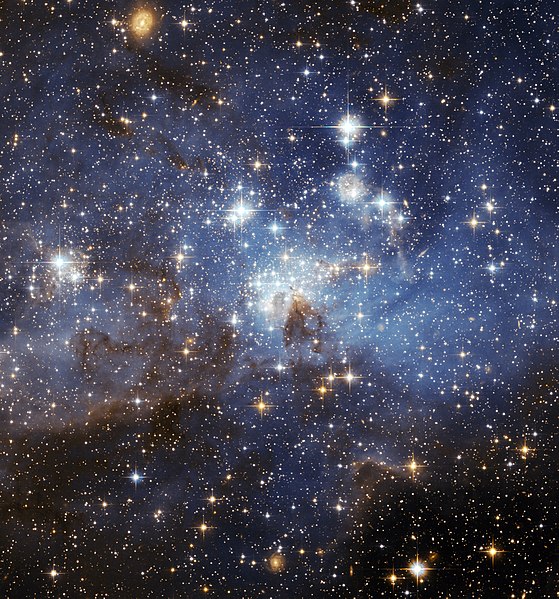
A stellar nursery in the Large Magellanic Cloud, a satellite cosmic system of the Milky Way. Picture credit: en.wikipedia.org, ESA, and the Hubble Heritage Team (STScI/AURA)- ESA/Hubble Collaboration.
There are the individuals who contend that it's doubtful to give these three stages a joined likelihood of under 10^– 22, and subsequently infer that there probably been outsiders somewhere else in the Universe. However, this is itself an outrageous claim, in view of no proof at all. Abiogenesis may have been normal; it might have happened different circumstances on Earth alone, or on Mars, Titan, Europa, Venus, Enceladus, or somewhere else even outside of our own Solar System. Yet, it additionally might be such an uncommon procedure, to the point that regardless of whether we made a hundred clones of a youthful Earth — or a thousand, or a million, or more — our world may be the main planet to develop with life on it.
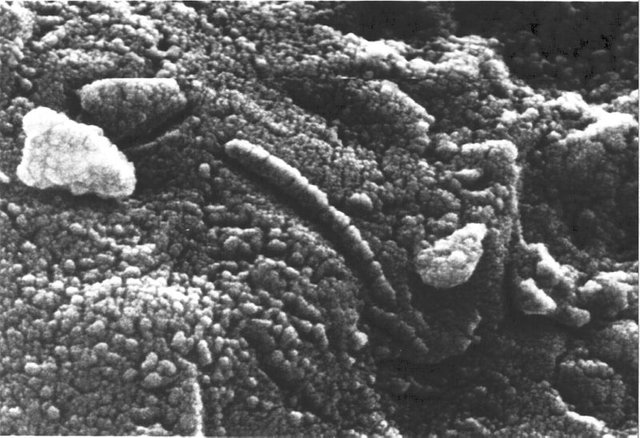
Structures on ALH84001 shooting star, which has a Martian cause. Some contend that the structures appeared here might be old Martian life. Picture credit: en.wikipedia.org, from 1996.
Also, regardless of whether life does happen, how blessed do you should be to have it survive and flourish for billions of years? Would a disastrous warming situation, similar to Venus, be the standard? Or on the other hand a disastrous solidifying and barometrical misfortune situation, as on Mars? Or on the other hand would life end up harming itself out of presence more often than not, as it nearly did on Earth two billion years back? Furthermore, regardless of whether you had life get by for billions of years, how frequently would you get something like the Cambrian blast, where enormous, multicellular, naturally visible plants, creatures and growths came to command a planet? It could be moderately normal, where perhaps 10% of endeavors make it, or it could be uncommon, where 1-in-a-million or even 1-in-a-billion are nearer to the sensible chances.

Bonobo at the San Diego Zoo "angling" for termites. Picture credit: en.wikipedia.org client Mike R.
What's more, regardless of whether you arrive, how uncommon is an apparatus utilizing, innovation creating, rocket dispatch propelling species like a human? Complex reptiles, winged animals and vertebrates that could be viewed as keen by numerous measurements have been around for tens to a huge number of years, yet present day people came to fruition short of what one million years prior, and we just moved toward becoming what we'd consider "mechanically progressed" in the most recent century or two. Is there a 10% shot that on the off chance that you endure the past advance, you get to a spacefaring progress? Or on the other hand is that more like one-in-a-thousand, one-in-a-million, one-in-a-trillion, or even far, far more awful?

Alan Chinchar's 1991 version of the Space Station Freedom in circle. Picture credit: NASA.
The reality of the situation is, this: we don't have the foggiest idea. We know the Universe gives canny life countless, on the request of 10²². Furthermore, we realize that there's just a little likelihood of going from a possibility at life to a spacefaring, mechanically propelled human progress. What we don't know is whether that possibility is something like 10^– 3, 10^– 20, 10^– 50, or some other number. We realize that life like people emerged once in this Universe, at any rate, so the likelihood must be non-zero. However, past that? We require information. Also, no measure of hypothesis or declarations will substitute for that data; we must discover it keeping in mind the end goal to know. Whatever else, in spite of what prognosticators of different kinds may guarantee, is just mystery.
To the question in your title, my Magic 8-Ball says:
Hi! I'm a bot, and this answer was posted automatically. Check this post out for more information.
Hi, I found some acronyms/abbreviations in this post. This is how they expand:
Is there any way to get in touch with you? Have some questions about your bot.
Best regards
Artur
Very good post dear . Thank you for share .
Beautiful images of the galaxy and especially excellent reportage that he made about the planets, is a document exquisiteness. Thank you for posting and @Steemit for allowing this to happen <3